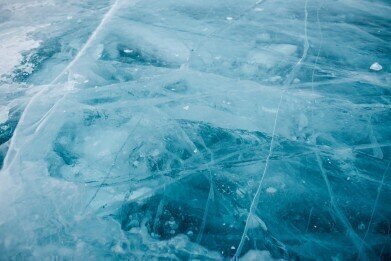News & Views
New Rosetta Research Suggests Comets Host Active Water-Ice Cycles
Oct 06 2015
For the past 12 months ESA’s Rosetta spacecraft has been orbiting Comet 67P/Churyumov-Gerasimenko and gathering exciting new data on its climatic patterns. Now, space scientists are meticulously analysing the data and are claiming that the comet could have an active water-ice cycle that syncs with its rotation periods.
Just like every other body in the solar system comets have a day/night cycle. Yet while on Earth the cycle takes 24 hours to complete, Comet 67P manages it in just half the time. Scientists have spent an entire year studying the patterns usingRosetta’s Visible, InfraRed and Thermal Imaging Spectrometer (VIRTIS). They’ve long suspected that the comet has an active water-ice cycle and now, the new findings have confirmed their theory. The data has since been published today in Nature journal and has created quite the buzz within the space science sphere.
“We found a mechanism that replenishes the surface of the comet with fresh ice at every rotation: this keeps the comet ‘alive,’” explains Maria Cristina De Sanctis, lead author of the study and researcher at Italy’s INAF-IAPS.
“We saw the tell-tale signature of water ice in the spectra of the study region but only when certain portions were cast in shadow. Conversely, when the Sun was shining on these regions, the ice was gone. This indicates a cyclical behavior of water ice during each comet rotation.”
Uncovering H20 patterns in outer space
So how did the team manage to uncover the existence of a water-ice cycle? Using VIRTIS data they honed in on a particularly active one kilometre square region located on the comet’s neck. They spent 12 months studying recurring patterns and found that during the day water-ice sublimated (i.e. turned from solid to gas). While at night the surface rapidly cooled, retained heat in the underlying layers caused subsurface water-ice to continue to sublimate. Gas travels through the comet’s permeable interior, then freezes when it reaches the surface, thus forming a thin layer of ice. When day breaks, the cycle begins all over again.
“We suspected such a water ice cycle might be at play at comets, on the basis of theoretical models and previous observations of other comets but now, thanks to Rosetta’s extensive monitoring at 67P/Churyumov-Gerasimenko, we finally have observational proof,” says Fabrizio Capaccioni, VIRTIS principal investigator at INAF-IAPS.
Water-ice cycles aren’t just fascinating space scientists. On Earth, researchers are using thermal imaging cameras to monitor the spring frosts that devastate the agricultural production industry. Find out more in ‘Thermal Imaging Cameras Help Researchers Study Ice Nucleation and Ice Propagation in Plants.’
Digital Edition
Lab Asia 31.2 April 2024
April 2024
In This Edition Chromatography Articles - Approaches to troubleshooting an SPE method for the analysis of oligonucleotides (pt i) - High-precision liquid flow processes demand full fluidic c...
View all digital editions
Events
Apr 28 2024 Montreal, Quebec, Canada
May 05 2024 Seville, Spain
InformEx Zone at CPhl North America
May 07 2024 Pennsylvania, PA, USA
May 14 2024 Oklahoma City, OK, USA
May 15 2024 Birmingham, UK


















